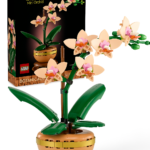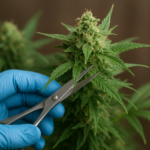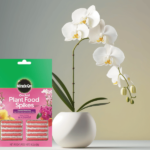The Hoya New Guinea Ghost, with its mesmerizing foliage and delicate blooms, is a popular choice among plant enthusiasts. Known for its unique leaves that resemble ghostly apparitions, this Hoya variety adds a touch of mystique to any indoor garden.
In this care guide, we’ll take you on a journey through the mystical realm of the Hoya New Guinea Ghost. From the art of finding the perfect spot for your plant to mastering the delicate balance of watering and fertilizing, we’ve got all the expert tips and tricks to ensure your Hoya thrives. Whether you’re a seasoned plant parent or just starting your green adventure, this guide will equip you with the knowledge you need to create an enchanted haven for your Hoya.
So, let’s unlock the secrets and unveil the magic of the Hoya New Guinea Ghost together!
Hoya New Guinea Ghost
The Hoya New Guinea Ghost is a stunning and captivating plant that belongs to the Hoya genus, known for its unique foliage and beautiful flowers. It is a popular species among plant enthusiasts and collectors due to its distinct appearance and relatively rare availability in cultivation. Let’s delve into its origin, history, and characteristics.
Origin
The Hoya New Guinea Ghost is native to the tropical rainforests of Papua New Guinea, a country located in the southwestern Pacific Ocean. These forests provide the ideal habitat for this epiphytic plant, where it can be found growing on trees and rocks, deriving nutrients from the air and rainwater.
History
The exact history of the Hoya New Guinea Ghost is not well-documented, but it is believed to have been discovered and collected by botanists and plant explorers in the remote regions of Papua New Guinea. Due to its desirability, it eventually found its way into cultivation, allowing plant lovers around the world to enjoy its beauty.
Characteristics
The Hoya New Guinea Ghost showcases a set of distinctive features that make it highly sought after. Its foliage is the highlight of this plant, characterized by its ghostly appearance. The leaves are thick and succulent, with a waxy texture and a translucent quality, giving them an ethereal and ghost-like appearance. The color of the leaves varies from pale green to a silvery-gray hue, which enhances the ghostly effect.
Another notable characteristic of this Hoya variety is its growth habit. It is a trailing or climbing plant that produces long, vining stems adorned with clusters of foliage. The vines can grow quite long, making it an excellent choice for hanging baskets or for training on trellises and supports.
In addition to its intriguing foliage, the Hoya New Guinea Ghost also produces stunning flowers. The blossoms are typically star-shaped and are composed of small, waxy petals. The color of the flowers varies, but they often appear in shades of pale pink or creamy white, exuding a delicate and elegant beauty. The fragrance emitted by the blooms is sweet and intoxicating, adding to the allure of this plant.
Hoya New Guinea Ghost Care Guide
Caring for the Hoya New Guinea Ghost requires providing it with the right conditions and attention. Here’s a care guide to help you keep your Hoya New Guinea Ghost healthy and thriving:
Light requirements
The Hoya New Guinea Ghost prefers bright, indirect light. Place it near a window where it can receive bright, filtered sunlight. Avoid exposing it to direct sunlight, as this can cause leaf burn. Insufficient light may result in leggy growth and reduced flowering.
Temperature and humidity
This Hoya variety thrives in average room temperatures ranging from 65 to 80 degrees Fahrenheit (18 to 27 degrees Celsius). Protect it from cold drafts and extreme temperature fluctuations.
The Hoya New Guinea Ghost appreciates moderate to high humidity levels. Consider misting the leaves regularly or placing the plant near a humidifier to maintain adequate humidity.
Provide the right soil
Hoya New Guinea Ghost thrives in well-draining soil that is rich in organic matter. A recommended soil mix for this plant consists of a combination of peat moss, perlite, and orchid bark. This mixture promotes good aeration, and moisture retention, and prevents waterlogged conditions that could lead to root rot. It is important to avoid using heavy or compacted soil that retains too much moisture, as this can be detrimental to the plant’s health.
Ensure Proper Drainage
Proper drainage is crucial for Hoya New Guinea Ghost, as it helps prevent waterlogged conditions and ensures the roots do not become overly saturated. It is advisable to use pots with drainage holes to allow excess water to escape. Additionally, placing a layer of small rocks or broken pottery at the bottom of the pot can further enhance drainage by creating a space for water to accumulate without directly saturating the plant’s roots.
Select Appropriate Pot
Selecting the right pot size is important for the healthy growth of Hoya New Guinea Ghost. When choosing a pot, it is recommended to opt for a container that is slightly larger than the plant’s current root system. Hoya New Guinea Ghost generally prefers being slightly root-bound, so a pot that is too large may retain excess moisture and potentially lead to root rot. A clay or terracotta pot can be beneficial, as it allows for better airflow and aids in moisture regulation.
Watering
Allow the soil to partially dry out between waterings. The Hoya New Guinea Ghost prefers slightly moist soil but is susceptible to root rot if overwatered. Before watering, check the top inch (2.5 cm) of the soil; if it feels dry, it’s time to water. Ensure proper drainage by using well-draining soil and pots with drainage holes.
Fertilization
Feed your Hoya New Guinea Ghost during the growing season, which is typically spring and summer. Use a balanced, water-soluble fertilizer specifically formulated for houseplants. Follow the instructions on the fertilizer package for proper dilution and application. Be cautious not to over-fertilize, as it can lead to salt buildup and damage to the plant.
Potting and Repotting
The Hoya New Guinea Ghost prefers to be slightly pot-bound. Repotting is usually necessary every two to three years or when the plant outgrows its current pot. Choose a well-draining potting mix suitable for epiphytic plants or create a mix of orchid bark, perlite, and peat moss. When repotting, be gentle with the delicate roots.
Pruning
Prune your Hoya New Guinea Ghost to control its size and shape, promote bushier growth, and remove any dead or yellowing leaves. Use clean, sharp pruning shears to make clean cuts just above a node. You can propagate the cuttings to grow new plants if desired.
Support and training
As a trailing or climbing plant, the Hoya New Guinea Ghost benefits from support and training. Provide a trellis, moss pole, or other support structures for the vines to cling onto. Regularly check the plant’s growth and adjust the support as needed to guide the vines in the desired direction.
Also read about –
Propagating Hoya New Guinea Ghost
If you are a plant lover looking to expand your hoya collection, learning the propagation methods for Hoya New Guinea Ghost can be an exciting and rewarding process.
Several propagation methods can be used to propagate Hoya New Guinea Ghost, and each method has its own advantages and considerations. Here are some common propagation methods:
Stem Cutting
Stem cutting is a popular and effective method for propagating Hoya New Guinea Ghost. Select a healthy stem that is several inches long and has at least two to three nodes. Nodes are the points where leaves emerge from the stem. Using a clean, sharp knife or shears, make a clean cut just below a node. Remove any lower leaves near the cut to prevent rotting. Allow the cut end to dry and callus for a day or two to reduce the risk of rot. Once calloused, plant the cutting in a well-draining propagation mix, such as a mixture of perlite and peat moss. Keep the soil lightly moist and provide indirect light. Over time, the cutting will develop roots and establish itself as a new plant.
Leaf Cutting
Hoya New Guinea Ghost can also be propagated from leaf cuttings, although this method requires more time and patience. Select a healthy leaf and make a clean cut near the base of the leaf, ensuring that a small section of the stem is attached. Place the leaf-cutting in a container filled with a well-draining medium, such as a mixture of perlite and sphagnum moss. Mist the cutting and cover it with a clear plastic bag to create a humid environment. Keep the container in a warm, bright location but avoid direct sunlight. After several weeks to months, small plantlets may emerge from the base of the leaf. Once these plantlets develop roots, they can be carefully separated and potted individually.
Layering
Layering is another propagation method that can be used for Hoya New Guinea Ghost. This method involves encouraging roots to form on a stem while it is still attached to the parent plant. Select a healthy, flexible stem and gently wound a small section near a leaf node. Apply rooting hormone to the wounded area to stimulate root growth. Next, bury the wounded section of the stem in a small container filled with a well-draining medium, such as a mixture of perlite and vermiculite. Keep the medium moist and provide indirect light. After a few weeks to months, roots should develop from the wounded section. Once the roots are well-established, the rooted section can be cut from the parent plant and potted separately.
Regardless of the propagation method you choose, it is important to provide a warm and humid environment for the newly propagated Hoya New Guinea Ghost. Maintain consistent moisture levels, but avoid overwatering, as this can lead to root rot. Once the new plants have established roots and show signs of growth, they can be gradually acclimated to their desired growing conditions.
Remember that propagation can be a rewarding but delicate process, and success rates may vary. Patience, attention to detail, and providing optimal growing conditions are key factors in successfully propagating Hoya New Guinea Ghost. With time and care, you can enjoy the satisfaction of growing new plants and expanding your hoya collection.
Indoor Displays with Hoya New Guinea Ghost
Beyond its individual beauty, the Hoya New Guinea Ghost can be part of stunning indoor displays that elevate the visual appeal of your home. Here are some tips to create captivating arrangements:
Hanging baskets
Hang your Hoya New Guinea Ghost in a decorative hanging basket, allowing its cascading vines to create a captivating display. Choose a basket that complements your interior decor and ensure it is securely fastened to avoid accidents.
Trellises and supports
Provide your Hoya New Guinea Ghost with a trellis or support system to encourage vertical growth. This not only adds an artistic element but also helps showcase the plant’s unique leaf patterns. Consider decorative trellises or moss poles for an aesthetically pleasing display.
Terrariums
Create a miniature garden by placing your Hoya New Guinea Ghost in a glass terrarium. This enclosed environment provides high humidity and creates a mesmerizing display, especially when combined with other tropical plants and decorative elements like rocks and miniature figurines.
Remember to periodically check the growth of your plants and adjust the display as needed to ensure each plant has enough space and access to light. Get creative and let your imagination run wild to create stunning indoor displays with your Hoya New Guinea Ghost as the centerpiece.
Common Pests and Diseases
Hoya New Guinea Ghost, like any other plant, can be susceptible to certain pests and diseases. Being aware of these potential issues and knowing how to identify and treat them is important for maintaining the health of your plant. Here are some common pests and diseases that can affect Hoya New Guinea Ghost:
Pests
Mealybugs (Pseudococcidae)
Mealybugs are small, soft-bodied insects that often appear as white, cottony masses on the leaves and stems of plants. They feed by piercing the plant tissue and sucking out the sap, leading to weakened growth and yellowing leaves.
To control mealybugs, manually remove them with a cotton swab dipped in rubbing alcohol. You can also use a solution of water and mild liquid soap to gently wipe the affected areas. If the infestation is severe, consider using an organic insecticidal soap or neem oil spray.
Scale Insects (Coccoidea)
Scale insects are tiny, oval-shaped pests that attach themselves to the stems and leaves of plants, forming hard, protective shells. They feed on the plant’s sap, causing yellowing, stunted growth, and leaf drop.
Like mealybugs, you can manually remove scale insects by gently scraping them off with a soft brush or cotton swab dipped in rubbing alcohol. For severe infestations, consider using horticultural oil or insecticidal soap sprays to control the population.
Spider Mites (Tetranychidae)
Spider mites are tiny arachnids that are difficult to spot with the naked eye. They often leave a fine webbing on the leaves and feed by piercing the plant cells, causing stippling, discoloration, and leaf curling.
Increase humidity around the plant, as spider mites thrive in dry conditions. Regularly mist the leaves and wipe them with a damp cloth to deter these pests. In case of a severe infestation, use insecticidal soap or a neem oil-based spray, making sure to cover the undersides of the leaves where spider mites tend to hide.
Diseases
Root Rot
Root rot is a common fungal disease caused by overwatering or poorly drained soil. It leads to rotting of the roots, resulting in wilting, yellowing leaves, and stunted growth.
If root rot is suspected, carefully remove the plant from the pot and examine the roots. Trim away any mushy or discolored roots, and repot the plant in fresh, well-draining soil. Ensure that the pot has proper drainage to prevent future occurrences of root rot. Adjust your watering practices to allow the soil to dry out slightly between waterings.
Leaf Spot
Leaf spot diseases are fungal infections that cause circular or irregular brown spots on the leaves. These spots may have a yellow halo around them, and severe cases can lead to defoliation.
Remove and destroy the affected leaves to prevent the spread of the disease. Avoid overhead watering, as it can contribute to the development of leaf spots. Ensure good air circulation around the plant and avoid overcrowding. If the disease persists, consider using a fungicidal spray following the manufacturer’s instructions.
It is important to regularly inspect your Hoya New Guinea Ghost for any signs of pests or diseases. Early detection and appropriate treatment increase the chances of successful control.
Conclusion
In conclusion, successfully caring for the Hoya New Guinea Ghost requires attention to its specific needs and characteristics. By providing the ideal growing conditions, being mindful of watering practices, addressing potential challenges, and exploring creative display ideas, you can enjoy the beauty and rewards of growing this unique plant. Embrace the mystery and elegance of the Hoya New Guinea Ghost, and let it transform your indoor space into a lush and captivating oasis.
Remember, the journey of plant care is a continuous learning experience. Observe your Hoya New Guinea Ghost closely, adjust your care routine as needed, and enjoy the ever-changing beauty it brings to your surroundings. Happy gardening!







